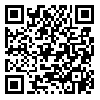BibTeX | RIS | EndNote | Medlars | ProCite | Reference Manager | RefWorks
Send citation to:
URL: http://sjsph.tums.ac.ir/article-1-160-en.html
Background and Aim: Superinfection of burn wounds is a major cause of mortality and morbidity in hospital burn units. It is crucial for every burn center to determine the pattern of microbial colonization in burn wounds and the antimicrobial sensitivity profiles. This study was carried out on patients admitted to the Burn Unit of Emam Reza University Hospital, Mashhad, with the aim of verifying the pattern of microbial colonization of burn sites and determining the antimicrobial sensitivity of the isolated bacterial species.
Materials and Methods: In this study a total of 344 samples were obtained from 126 burn patients. After isolation and identification of bacteria, we used an agar diffusion method to determine sensitivity against 14 common antibiotics.
Results: Our results showed that 27.7% of the wounds were sterile at the time of the first dressing, but the rate of contamination increased with time so that only 5% of wounds were sterile by the third week Pseudomonas aeroginosa was the most frequently isolated species (31.7%). Most of bacteria were resistant to amoxicillin ciprofloxacin and imipenem emerged as the most effective antibiotics.
Conclusion: The common occurrence of gram-negative bacilli and staphylococci together with the sensitivity patterns show that we are far from eradication of wound infections, so there is an urgent need for improved infection control practices and policies.
Received: 2007/03/17 | Accepted: 2008/01/20 | Published: 2013/10/13
| Rights and permissions | |
 |
This work is licensed under a Creative Commons Attribution-NonCommercial 4.0 International License. |





